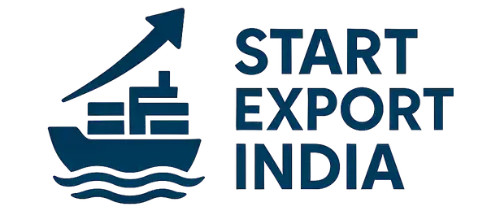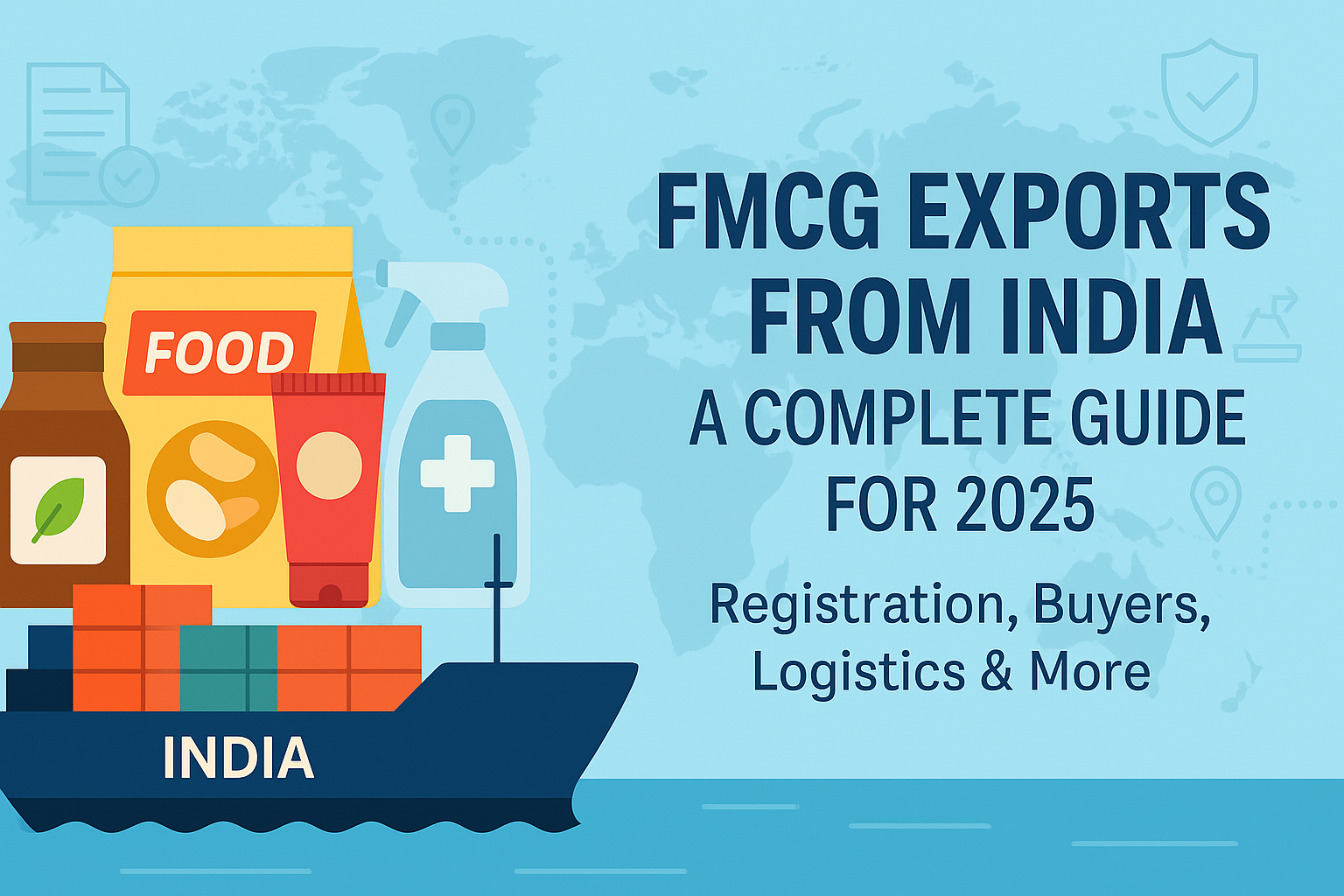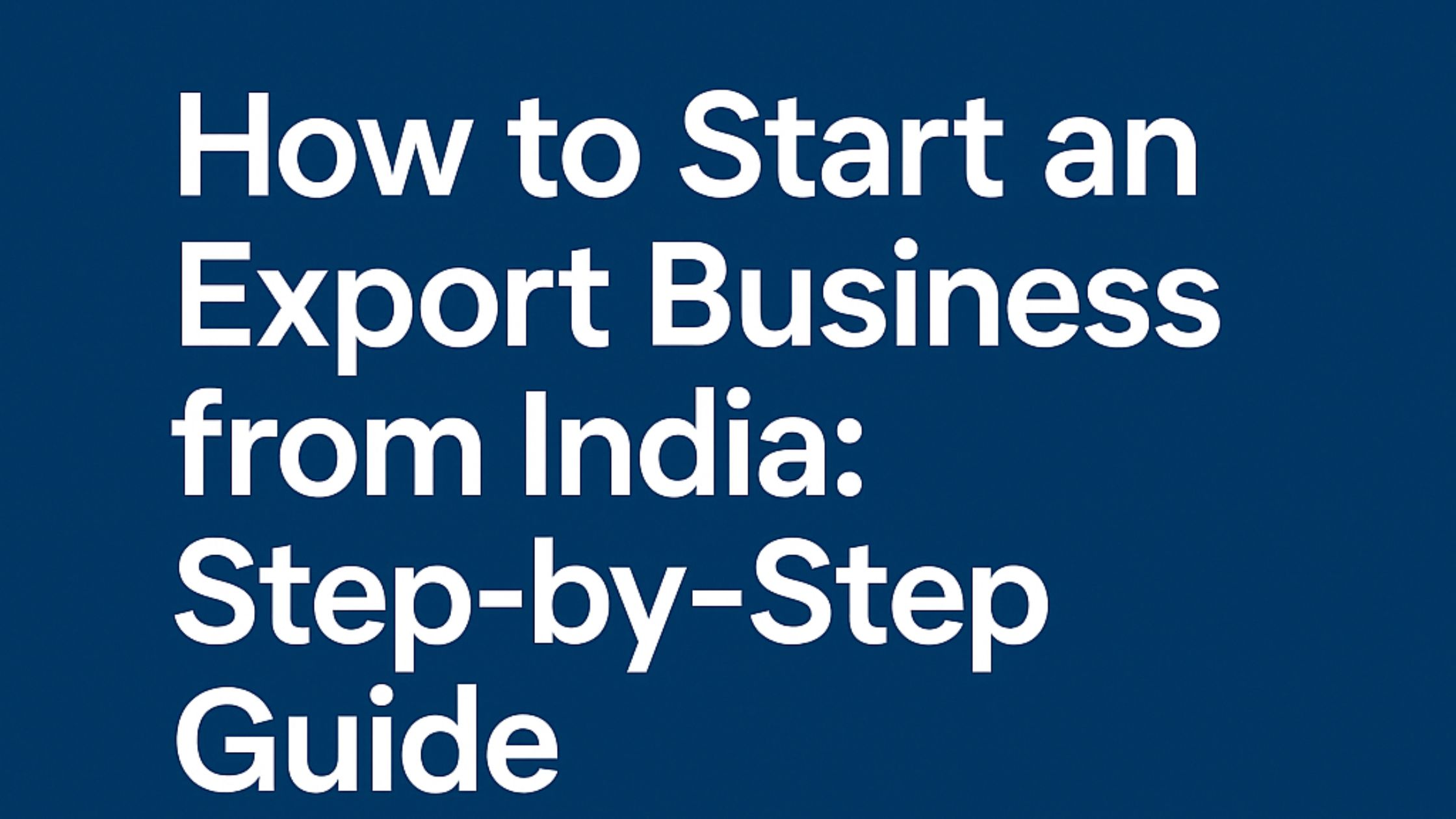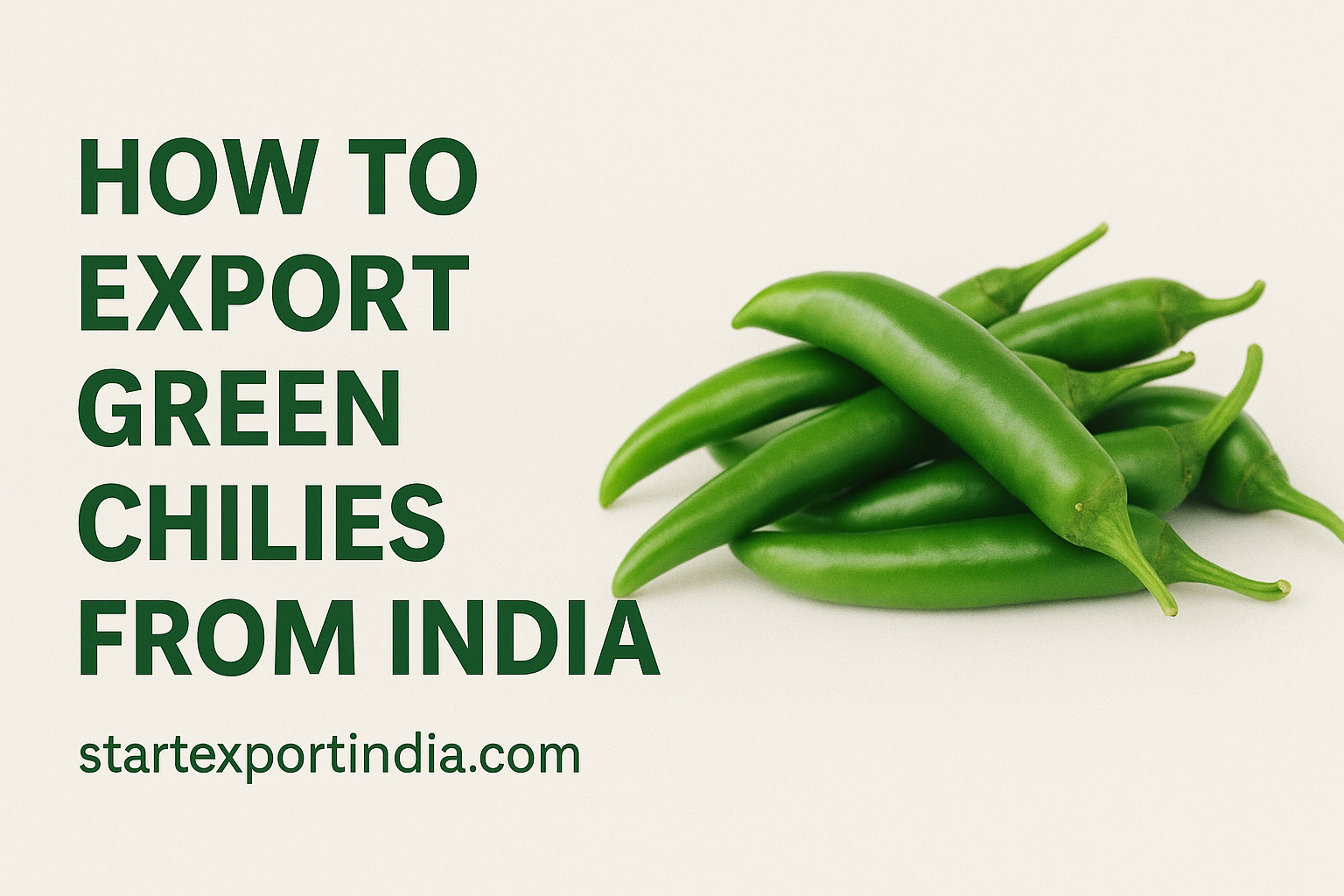FMCG Exports from India: A Complete Guide for 2025
🧭 Introduction
FMCG Exports from India: India’s Fast-Moving Consumer Goods (FMCG) sector isn’t just booming domestically — it’s making waves globally. With rising demand for Indian snacks, cosmetics, ayurvedic products, and packaged foods, FMCG exports from India present a lucrative opportunity in 2025. This guide will walk you through the products, registration, compliance, packaging, buyer sourcing, logistics, and top markets for Indian FMCG exports.
Whether you’re a manufacturer, trader, or startup looking to go global, this guide is your roadmap.
- FMCG Exports from India: A Complete Guide for 2025
- 🧭 Introduction
- ✅ 1. What Are FMCG Products?
- 📈 2. Top Indian FMCG Products in Global Demand
- 🌍 3. Why FMCG Exports from India Are Booming in 2025
- 📦 4. How to Start Exporting FMCG from India – Step-by-Step
- 📝 5. Licenses & Registrations Required
- 📦 6. Packaging, Labeling, and Shelf-Life Rules
- 🌐 7. How to Find Buyers for FMCG Products
- 📄 8. Export Documentation Checklist
- 🚚 9. Shipping & Cold Chain Logistics
- 💳 10. Payment Terms & Risk Protection
- 🎁 11. Govt. Schemes for FMCG Exporters
- 🌎 12. Top Export Markets for Indian FMCG
- 🧠 13. Final Tips & Mistakes to Avoid
- 🔚 Conclusion
- 📘 Bonus:
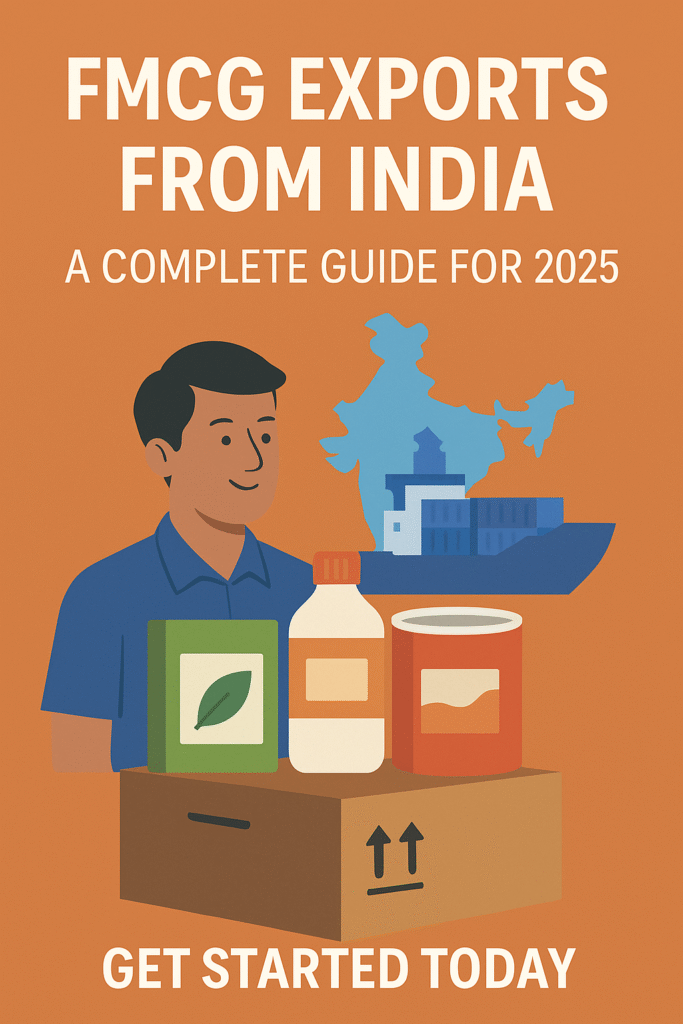
✅ 1. What Are FMCG Products?
FMCG (Fast-Moving Consumer Goods) are low-cost, high-volume products sold quickly and frequently. These include:
- Packaged foods & snacks
- Beverages
- Toiletries & hygiene products
- Cosmetics
- Cleaning products
- Ayurvedic/Herbal items
📈 2. Top Indian FMCG Products in Global Demand
Here’s what’s trending in global import charts:
- Namkeens, papads, masalas (spices)
- Ready-to-eat meals
- Biscuits and bakery items
- Hair oils, fairness creams, soaps
- Ayurvedic tonics and immunity boosters
📌 Popular Brands Going Global: Patanjali, Haldiram’s, Dabur, Emami, Himalaya, and ITC.
🌍 3. Why FMCG Exports from India Are Booming in 2025
- Rising diaspora demand: Indians abroad crave homegrown brands
- Cost advantage: Competitive pricing due to local sourcing
- FTA benefits: Lower import duties in UAE, Australia, and Africa
- Digital enablement: Easy documentation, IEC & DGFT online portals
📦 4. How to Start Exporting FMCG from India – Step-by-Step
- Choose your FMCG product(s)
- Register your company & obtain IEC (Import Export Code)
- Obtain FSSAI License, GST, and RCMC (from APEDA or FIEO)
- Identify target markets and do HS code research
- Build product catalog and label as per destination requirements
- Start reaching out to buyers via B2B platforms and trade fairs
- Handle documentation, freight, and payment terms
📝 5. Licenses & Registrations Required
- IEC Code – Mandatory for exports (Apply via DGFT)
- FSSAI – Required for any food-related product
- RCMC – From a recognized Export Promotion Council
- MSME Udyam Registration (optional but helps with schemes)
📦 6. Packaging, Labeling, and Shelf-Life Rules
- Comply with destination country’s food packaging laws
- Label in English + local language (if required)
- Indicate:
- Manufacturing/Expiry date
- Country of origin
- Ingredients & nutrition chart
- Export-friendly packaging: vacuum sealing, moisture-proof, etc.
🌐 7. How to Find Buyers for FMCG Products
- Trade portals: IndiaMART, Alibaba, ExportHub, GlobalSources
- Social media outreach (LinkedIn, B2B forums)
- Email pitching to importers, distributors, and supermarkets abroad
- Fairs & exhibitions (Gulfood Dubai, SIAL Paris, etc.)
📄 8. Export Documentation Checklist
- Commercial Invoice
- Packing List
- Bill of Lading / Airway Bill
- Certificate of Origin
- FSSAI/Fumigation/Phytosanitary Certificate (for food)
- Product-specific clearance (Ayush, HALAL, etc.)
🚚 9. Shipping & Cold Chain Logistics
- Choose sea or air depending on shelf-life and volume
- Use temperature-controlled containers if needed
- Partner with reliable freight forwarders & CHAs
- Consider insurance & risk coverage
💳 10. Payment Terms & Risk Protection
- Suggested methods:
- 100% Advance
- Letter of Credit (LC)
- DA/DP (for known buyers)
- Secure payments via:
- ECGC (Export Credit Guarantee Corp.)
- Export factoring services
🎁 11. Govt. Schemes for FMCG Exporters
- RoDTEP – Refund of embedded taxes
- Market Access Initiative (MAI)
- Interest Equalization Scheme
- PM Formalization of Food Processing (PMFME) for small brands
🌎 12. Top Export Markets for Indian FMCG
- Middle East (UAE, Saudi Arabia)
- USA & Canada
- UK, Germany
- Africa (Kenya, Nigeria)
- Australia, Singapore
🧠 13. Final Tips & Mistakes to Avoid
✅ Always research import regulations of your target country
✅ Test packaging durability before bulk export
✅ Never rely on a single buyer
✅ Register your brand IP if planning long-term sales
❌ Don’t underprice – add margin for freight and duty
❌ Avoid poor quality packaging (can cause customs rejections)
🔚 Conclusion
With India’s FMCG sector booming and global appetite for “Made in India” brands growing, now is the time to tap into this profitable opportunity. By following the right process, meeting compliance, and using smart marketing, your FMCG export venture can thrive in 2025 and beyond.
📘 Bonus:
👉 Want to learn how to start exporting step-by-step, including pricing, buyers, and documentation?
📕 Download our ₹299 Beginner’s eBook – Start Exporting from India in 30 Days
